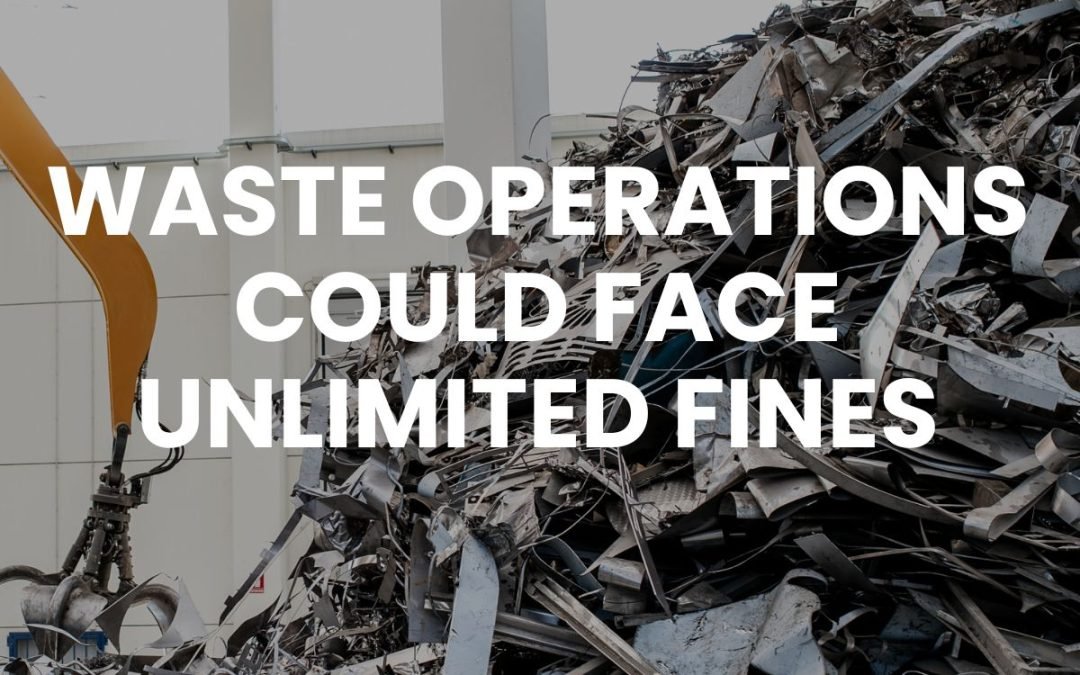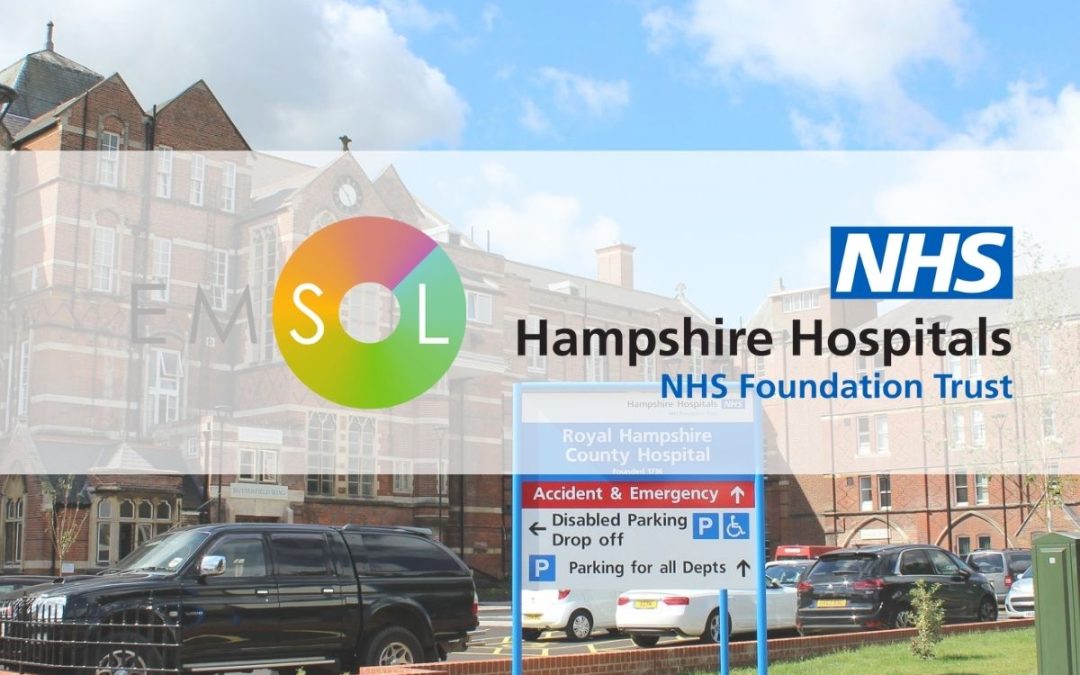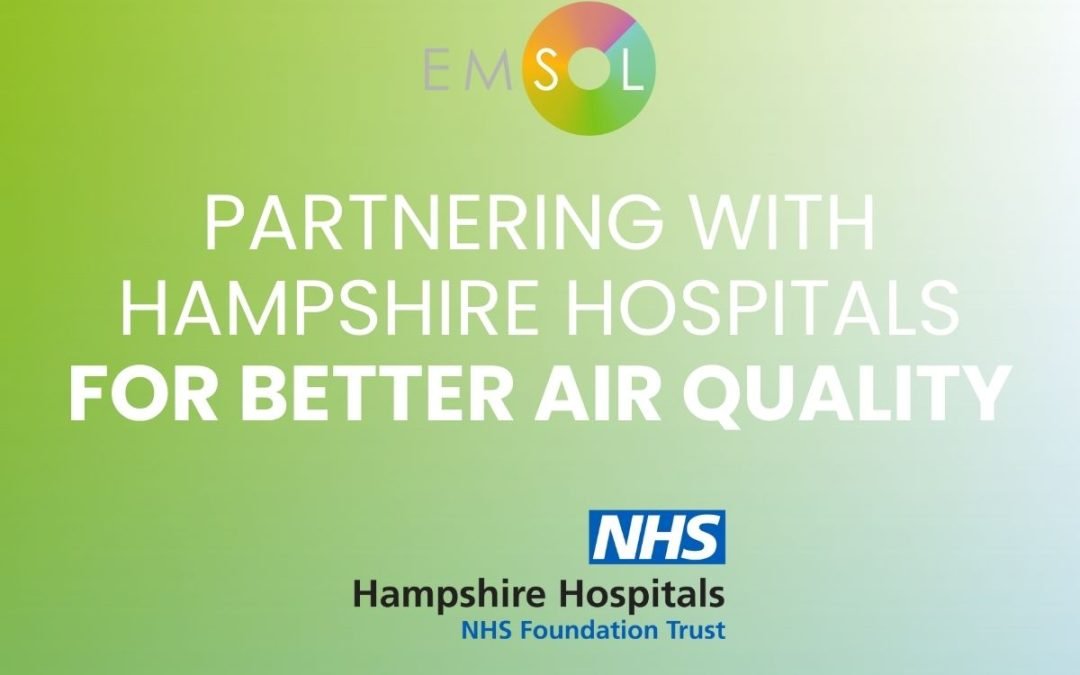he NHS is one of the largest public healthcare systems in the world. Not only does it employ over 1.3 million people, but it also oversees approximately 1.5 million patient interactions on a daily basis.
Ironically, whilst it is responsible for the health and wellbeing of people, the NHS is also responsible for 5% of the carbon emissions in the UK and 3.5% of road travel. Carbon emissions cause adverse health effects, often on the most vulnerable in society.
Being able to identify the pathway to net zero emissions is never going to be easy in an organisation as large, diverse, and complex as the NHS. However, NHS England has made a commitment to delivering a net zero by setting the following ambitious targets:
- An 80% reduction in emissions by 2028 – 2032
- To reach net zero by 2040 for emissions controlled directly by the NHS.
- To reach net zero by 2045 for emissions the NHS does not directly control but can influence.
One of the biggest challenges for NHS Trusts is the lack of accurate data relating to site-specific emissions, especially at a time when there are already huge demands on resources.
Tracking, monitoring, and reporting on emissions is the first step towards tackling on-site emissions, but gathering this data is challenging for many NHS Trusts.
However, innovative data and equipment solutions mean that NHS Trusts can now quickly and accurately gain valuable insights into emission levels and take proactive action.
Sustainable Healthcare and the NHS
Why does the NHS need to step up and take a leading role in reducing carbon emissions, especially site-based emissions?
Here are some of the outcomes:
- Health: as a national health service, the NHS is responsible for public health. There is irrefutable data and evidence that proves that emissions from healthcare facilities adversely affect health. Not only will a reduction in emissions from healthcare facilities help achieve the net zero targets, but they will also improve the health of patients, staff, and local communities.
- Compliance: like many public and private sector organisations throughout the UK, the NHS is under pressure from the government and regulatory bodies to reduce site-based emissions. Trusts that are already taking action to reduce emissions are more likely to avoid non-compliance penalties.
- Environmental: If the NHS is committed to holistic care, then it needs to look at the care of patients alongside the environmental impact of the healthcare facilities that treat those patients. Emissions from NHS sites contribute to climate change and environmental degradation. For sustainable healthcare to be implemented in a wide-reaching fashion, the NHS needs to mitigate its environmental carbon footprint now.
- Cost: reducing site-based emissions often leads to energy-efficient improvements and cost-savings. Strategies that include monitoring emissions, using energy-efficient technologies, and planning effective mitigation measures can reduce operational costs significantly. These measures also empower trusts to meet net zero goals.
- Corporate Social Responsibility: as one of the largest organisations in the UK, the NHS has a social responsibility to operate in a sustainable and conscientious manner. Many Trusts have started to recognise the importance of reducing emissions and the positive impact on their reputation and social responsibility.
What should NHS Trusts be doing about site emissions now?
The first and most crucial step in reducing site-based emissions is understanding what those emissions are. Tracking, monitoring, and recording emissions is essential.
Solutions such as EMSOL help NHS Trusts identify and target the causes of site-based emissions. EMSOL’s air quality monitors and camera technology provide valuable insights relating to emissions.
Once the emissions data is available, NHS Trusts can identify trends and implement specific and accurate interventions to reduce those emissions.
Using accurate, real-time data enables NHS Trusts to create tailored air quality programs that align with the NHS Green Plan. A reduction in emissions will lead to a reduction in patients presenting with cardiovascular and respiratory illnesses.
Why is monitoring important?
Emissions data is critical if the NHS is to understand its baseline assessment of current emission levels and to identify the root sources of these emission spikes. Identifying areas and trends with high emissions means time, energy, and resources can be used where they are most needed. Quickly.
Tackling the highest contributors to site-based emissions can help Trusts make a significant reduction in emissions levels. Once these high-emissions areas/equipment/sites are identified, the NHS can then set measurable and realistic reduction targets, aligning themselves with regulatory benchmarks. Monitoring also means that the NHS can ensure that stakeholders, supply chains, partners, and collaborators are also actively engaged in emission reduction initiatives.
Data-driven results and the NHS Green Plan
Data is not only useful for baseline assessments. Ongoing monitoring ensures that progress can be tracked, and the effectiveness of strategies can be objectively monitored.
This not only leads to transparent reporting, but also enables NHS Trusts to allocate resources in the most cost-effective way. Emissions data provides essential evidence-based insights that enable the NHS to prioritise decisions and resources related to reducing carbon emissions.
The NHS has been trying to track and report on its carbon emissions since 2008. The requirement to have accurate data is a key concept of the Green Plan which recommends that accurate data collection is ‘essential’.
Case Study EMSOL and Guys and St Thomas’ NHS Foundation Trust
Guys and St Thomas’ NHS Foundation Trust (GSTT) has already started using EMSOL’s innovative technology to tackle their site-based emissions.
To assist GSTT in monitoring and gaining insights into their site-based emissions, EMSOL initially deployed air quality sensors in the hospital’s loading bays/service yards. An area where all supply chain goods and materials arrive and where all the waste is transported out of the hospital. The EMSOL sensors and video analytics technology enable us to capture and understand the excess pollution events and who and what caused them. As well as all the baselining and time of day analysis essential to start setting meaningful targets and actions for change.
The innovative EMSOL technology is the starting point which now enables any site team to put forward key emissions management recommendations that include:
- Identifying the most polluting vehicles on site
- Identifying the specific supply chain and offending vehicle/machinery that exceeded expectations
- The recording and trending of site-specific emissions to track where improvements are being made
- Highlighting how many pollution-free days this month have been achieved
GSTT’s involvement with this innovative and ground-breaking pilot enabled them to identify the causes of on-site emission spikes and strategise accordingly.
Being armed with data-driven evidence enables NHS Trusts to engage with suppliers and stakeholders and upstream and downstream their emission reduction strategies. This type of collaborative health technology pathway is recommended by NHS England.
EMSOL technology enables organisations to monitor and collect real-time, accurate data. This data is then aggregated and analysed by EMSOL before it is sent to NHS Trusts for review. The data extracted enables organisations to identify the root cause of emissions on their sites and to plan effective emission reduction strategies.





